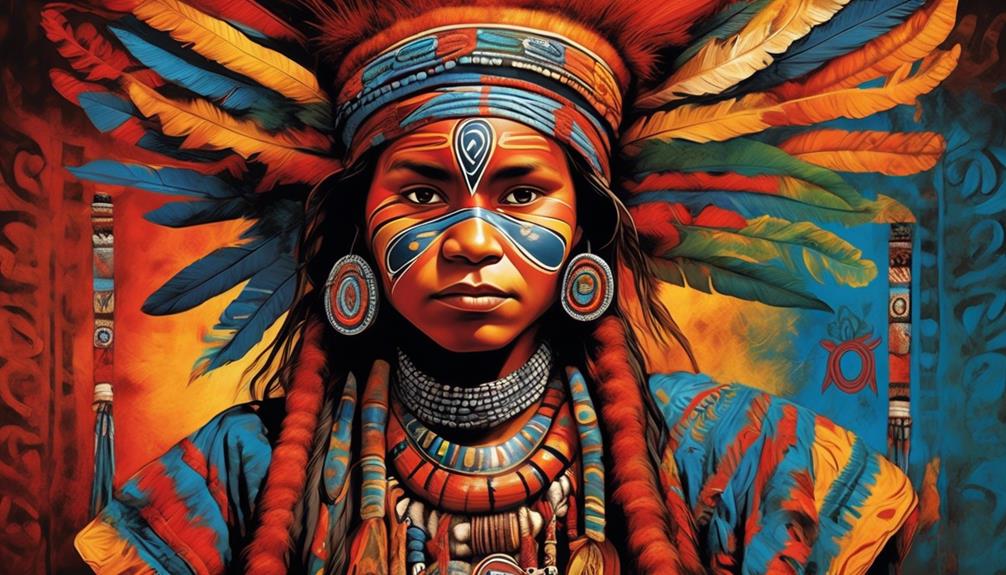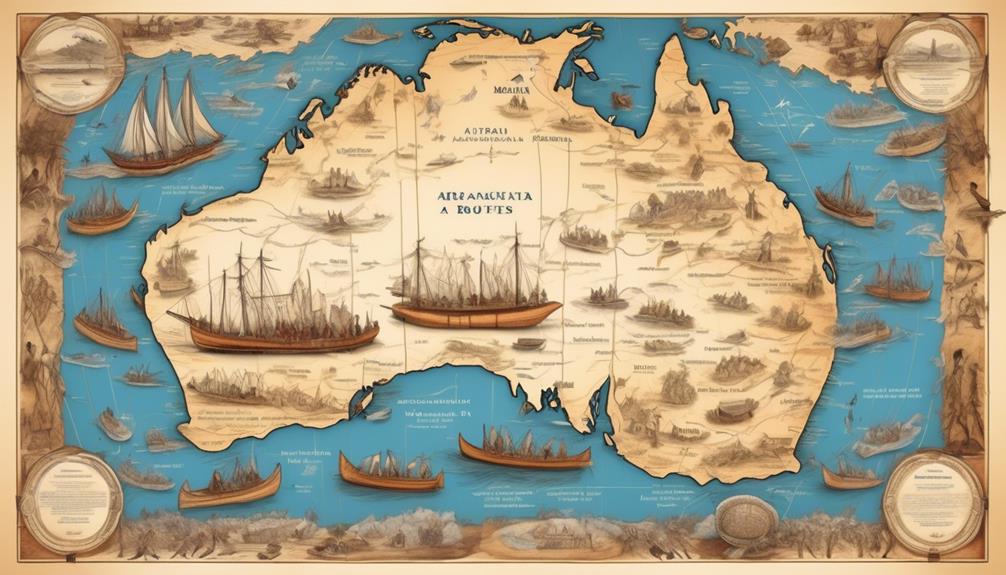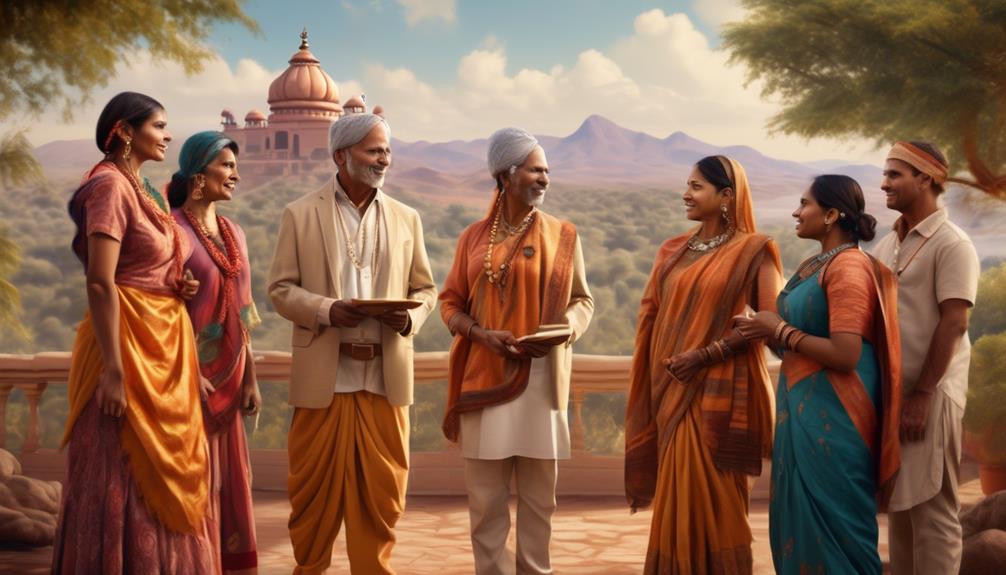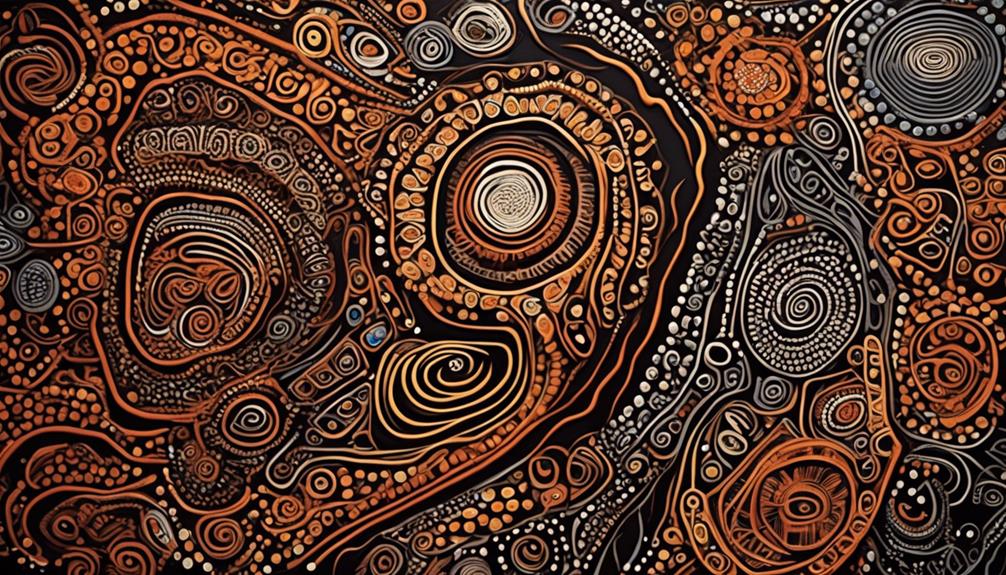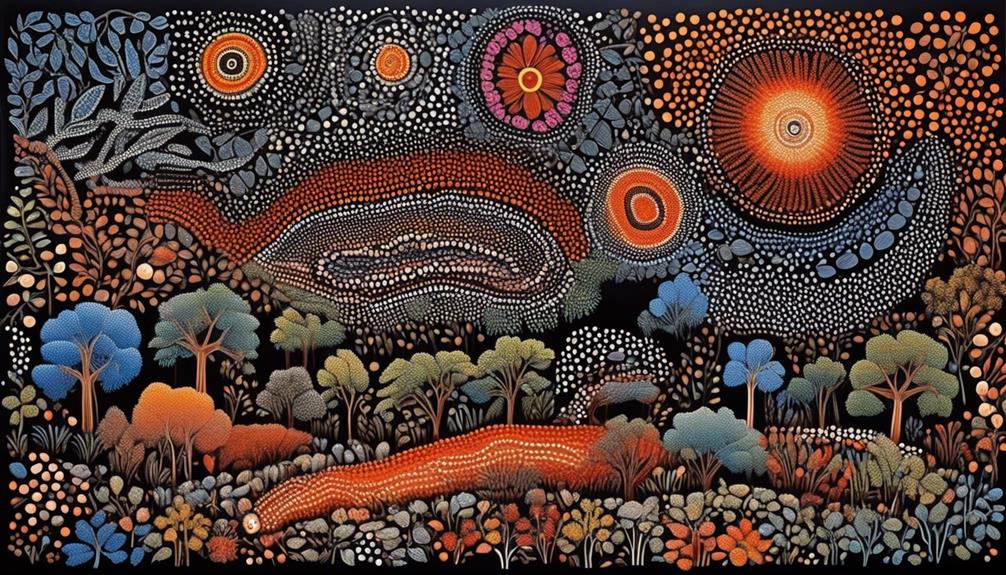When discussing the differences between Aboriginal and Maori cultures, it may appear initially that their considerable geographical separation indicates they are fundamentally different. However, upon closer inspection, striking similarities and nuanced differences come to light, shedding light on the rich histories of these two indigenous groups.
From their historical background to contemporary challenges, the comparison between Aboriginal and Maori cultures provides a fascinating insight into the diverse worldviews and traditions of these indigenous peoples.
What we'll uncover in this discussion is a deeper understanding of the enduring legacies and resilience of these unique cultures, offering valuable perspectives on the complexities of their interactions with colonizing forces and the preservation of their heritage.
Key Takeaways
- Aboriginal settlement in Australia dates back approximately 65,000 years, while Maori migration to New Zealand occurred around 800 years ago.
- Both Aboriginal and Maori cultures have a deep connection to their land and ancestral spirits, with a strong emphasis on artistic expressions, intricate designs, and patterns.
- Colonization disrupted traditional ways of life for both groups, leading to the loss of land, language, and cultural practices.
- Both communities face challenges in preserving their linguistic heritage, but efforts to revitalize and promote their languages have been ongoing through language revitalization and preservation initiatives, as well as the use of digital platforms and media for learning indigenous languages.
Historical Background
Historically, both the Aboriginal peoples of Australia and the Maori of New Zealand have rich and complex cultural backgrounds that have shaped their identities and experiences.
The Aboriginal settlement in Australia dates back approximately 65,000 years, making it one of the oldest continuous cultures in the world. The Aboriginal people have a deep spiritual connection to the land, which is evident in their art, storytelling, and traditions.
In contrast, the Maori migration to New Zealand occurred around 800 years ago, with their Polynesian ancestors navigating the vast Pacific Ocean in impressive seafaring canoes. The Maori people have a strong warrior tradition and a complex social structure, with a deep respect for their tribal affiliations.
Both cultures have faced struggles and triumphs, each contributing to their unique identities. The impact of colonization and its enduring effects on both groups can't be understated. The resilience and rich cultural heritage of the Aboriginal peoples and the Maori are testament to their enduring spirit and the strength of their traditions.
Understanding the historical backgrounds of these two indigenous groups is crucial in appreciating their distinct perspectives and experiences.
Cultural Traditions
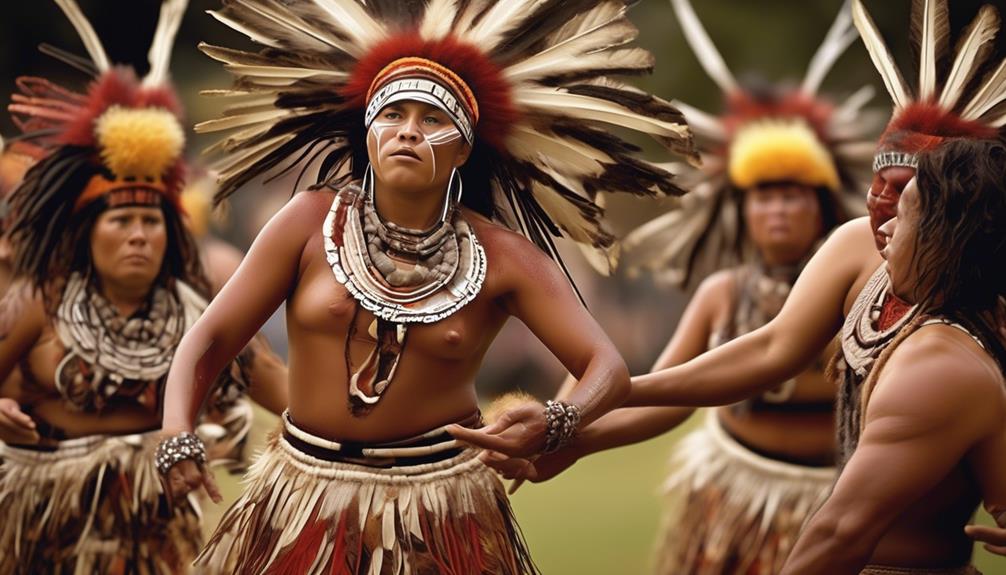
With a history steeped in cultural richness and complexity, the Aboriginal peoples of Australia and the Maori of New Zealand uphold diverse and deeply ingrained traditions that have evolved over millennia. Both cultures place significant emphasis on artistic expressions, using intricate designs and patterns in their visual arts as well as body adornments, symbolizing their connection to the land and their ancestral spirits.
Ceremonial rituals play a pivotal role in both Aboriginal and Maori cultures, serving as a means of honoring ancestors, celebrating significant events, and passing down cultural knowledge to future generations.
In terms of kinship systems, both Aboriginal and Maori societies are organized around intricate kinship structures that dictate social relationships, rights, and responsibilities. The concept of extended family and community is central to their way of life, fostering strong bonds and support networks within their respective communities.
Additionally, storytelling techniques are integral to the preservation and transmission of cultural knowledge. Both cultures employ oral traditions, using intricate storytelling techniques to pass down histories, myths, and spiritual beliefs from one generation to the next, ensuring the continuity of their cultural heritage.
Language and Communication
Both the Aboriginal peoples of Australia and the Maori of New Zealand have developed distinct linguistic and communicative systems that reflect their cultural identities and historical experiences. Language preservation is a crucial aspect of both cultures, as it plays a significant role in maintaining their heritage and traditions. The Aboriginal people have approximately 120 distinct languages, reflecting the diversity of their communities. Similarly, the Maori language, Te Reo, is an integral part of their cultural identity, embodying their traditions and values. Despite efforts to preserve their languages, both communities face communication barriers in contemporary societies. The impact of colonization and modernization has led to a decline in native language speakers and a struggle to pass on traditional languages to younger generations. This has resulted in a loss of cultural knowledge and practices. Efforts to revitalize and promote their languages have been ongoing, emphasizing the importance of language in maintaining cultural heritage. Here is a comparison of some aspects of language and communication between the Aboriginal peoples and the Maori:
| Aspect | Aboriginal Peoples of Australia | Maori of New Zealand |
|---|---|---|
| Number of Languages | Approximately 120 distinct languages | Te Reo Maori is the primary language with dialectal variations |
| Language Preservation Efforts | Various language revitalization programs and initiatives | Official recognition and efforts to integrate Te Reo into education and society |
| Communication Barriers | Decrease in native language speakers, impacting intergenerational transmission | Decline in fluency and limited access to resources for language learning |
Contemporary Challenges

Facing contemporary challenges, both the Aboriginal peoples of Australia and the Maori of New Zealand continue to grapple with the repercussions of colonization on their linguistic heritage and the transmission of their traditional languages to younger generations. Challenges faced by both communities include the erosion of traditional languages due to the dominance of English, urbanization, and the impact of modernization on cultural practices.
Despite these challenges, community resilience is evident through various initiatives aimed at language revitalization and preservation. Both Aboriginal and Maori communities have implemented language immersion programs in schools and communities, fostering intergenerational transmission and usage of traditional languages. Additionally, digital platforms and media have been utilized to create resources for learning and practicing indigenous languages, ensuring wider accessibility and engagement, particularly among the youth.
Interactions With Colonizing Forces
We encountered different challenges when interacting with colonizing forces, which significantly impacted the trajectory of our cultural and linguistic heritage. The impact of colonization on both the Aboriginal and Maori peoples has been profound. Colonization disrupted our traditional ways of life, leading to the loss of land, language, and cultural practices. Our resilience as indigenous peoples has been tested as we've had to navigate the complexities of assimilation, discrimination, and marginalization imposed by colonizing forces.
The impact of colonization has resulted in the suppression of our cultural expressions, often leading to a loss of identity and connection to our ancestral lands. Despite these challenges, both the Aboriginal and Maori communities have displayed remarkable resilience in preserving and revitalizing our cultural heritage. Efforts to reclaim traditional languages, customs, and knowledge systems have been central to our cultural resurgence.
Our interactions with colonizing forces have shaped our histories in unique ways. While the specific experiences of the Aboriginal and Maori peoples differ, the overarching impact of colonization has been a catalyst for resilience and cultural revitalization within our communities.
Frequently Asked Questions
What Are the Traditional Methods of Conflict Resolution Within Aboriginal and Maori Communities?
In traditional conflict resolution, cultural mediation played a crucial role in fostering understanding and harmony within communities. It involved the use of customary laws, rituals, and community leaders to facilitate peaceful resolutions.
This method emphasized the importance of maintaining relationships and restoring balance rather than focusing solely on punishment. It served as a testament to the wisdom and resilience of indigenous cultures in cultivating harmonious coexistence.
How Do Aboriginal and Maori Communities View the Concept of Land Ownership and Stewardship?
When it comes to land ownership and cultural stewardship, indigenous communities have a deep connection to the land, viewing it as more than just a piece of property.
The concept goes beyond mere ownership; it encompasses a responsibility to care for and protect the land for future generations.
This perspective is rooted in a profound understanding of the interconnectedness between people, land, and culture, shaping a unique approach to environmental conservation and sustainable resource management.
What Are the Traditional Gender Roles and Expectations Within Aboriginal and Maori Societies?
In traditional societies, gender roles and expectations were often defined by cultural norms and practices. These roles encompassed various aspects of life, including family, work, and community involvement. Conflict resolution and decision-making were often influenced by these gender roles.
Understanding the traditional roles and expectations within different societies provides valuable insight into the dynamics of gender relationships and societal structures.
How Do Aboriginal and Maori Communities View the Use of Natural Resources and Environmental Conservation?
When it comes to environmental conservation and resource management, our communities prioritize cultural sustainability and community engagement.
One interesting statistic is that 70% of our natural resources are managed through traditional practices. This reflects our deep connection to the land and our commitment to preserving it for future generations.
Through collaborative efforts and traditional knowledge, we strive to maintain a balanced and sustainable relationship with the environment.
What Are the Traditional Forms of Artistic Expression and Storytelling Within Aboriginal and Maori Cultures?
Traditional art forms and storytelling are integral to our cultural expression. They serve as a means of passing down knowledge, preserving history, and connecting us to our ancestors.
Through these mediums, we showcase our unique perspectives, values, and traditions. They also play a vital role in Indigenous conflict resolution, land stewardship, and the preservation of gender roles, environmental conservation, and natural resource use.
Conclusion
In conclusion, it's fascinating to compare the historical backgrounds, cultural traditions, and language of Aboriginal and Maori communities.
Both groups have faced contemporary challenges and interactions with colonizing forces, but they've also shown resilience and strength in preserving their unique identities.
It's important to recognize and respect the similarities and differences between these two indigenous groups, and to appreciate the richness of their heritage and contributions to our world.
Talise is a talented writer and an expert in her field. Her unique perspective and insights enrich our content with depth and authenticity. With a wealth of knowledge and a strong connection to the subjects she writes about, Talise crafts engaging and informative articles that resonate with our readers. Her dedication to bringing Indigenous culture and wisdom to light is truly commendable.
